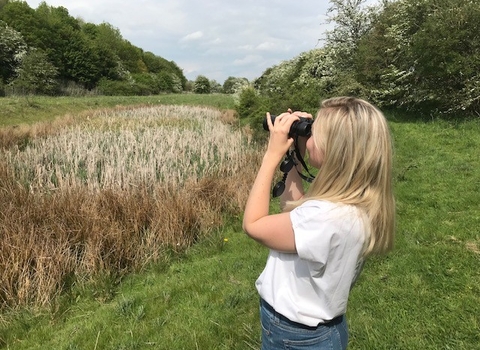Launched in May 2021, the Cambridge Nature Network has made a comprehensive start on a vision of expanding significant areas of meadows, woodlands, downlands, fens and waterways, providing increased natural spaces where people can experience the countryside and wildlife on the doorstep.
The Network currently has 24 active projects which will create and/or improve many areas of natural green space by early 2023, being undertaken by a variety of organisations working together to create larger and more connected natural habitats across the landscape and through the city.
Several projects recently completed include the planting of a new woodland near Coton, with more than 2,000 trees planted by volunteers; the restoration of 58 beautiful veteran willow trees on Sheep’s Green in Cambridge, and the creation of 20 acres of important chalk grassland habitat at Wandlebury Country Park - chalk grassland supports important rare specialist species from plants to bees, beetles and butterflies. It's hoped that this demonstration of tangible success will be a springboard for further nature recovery, nature-friendly farming and wildlife-rich suburbs and villages.
The Wildlife Trust's conservation manager Martin Baker says: “The Network has secured major funding this year via Natural England’s Nature Recovery Programme enabling us to start delivering some of the habitat creation opportunities set out in our strategy report. Each project will create new or better habitats for nature, ranging from conversion intensive arable farmland, expansion of country parks and nature reserves, to small projects on school grounds in the city."
Cambridge Past, Present and Future CEO James Littlewood says: “In the face of global problems such as the loss of nature, our actions can sometimes seem meaningless unless they are part of a collective effort. The Cambridge Nature Network gives us a long-term vision that we can all work towards in our own ways at our own pace. We can already see a difference after the completion of some great projects this year. If we all do our bit, then collectively we will make a difference.”
Looking ahead future projects include creating 150 acres of new meadows and woodland in the Gog Magog Hills, improving habitat on the Bin Brook and ditches, and working with five schools to improve their grounds for nature.
Initial funding for the Network is via the government’s Green Recovery Challenge and Natural England's Nature Recovery programme.

